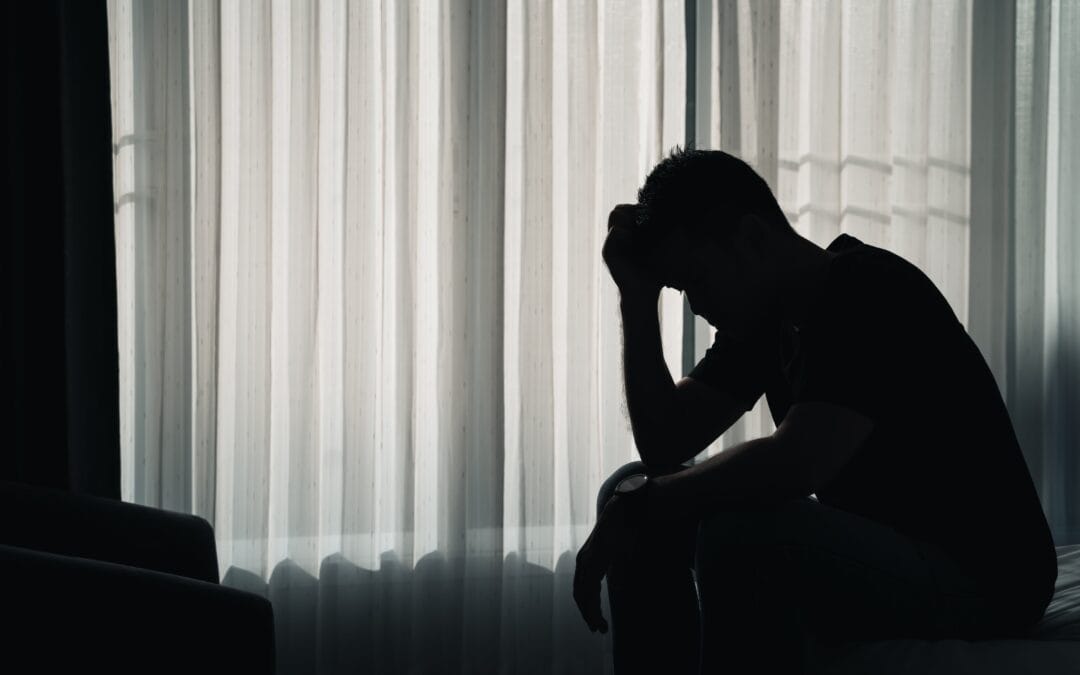Anxiety Disorder Treatment

Anxiety is typically defined as feeling worried or uneasy about how an anticipated event or situation might play out or about a perceived danger. People experiencing anxiety may feel tense, worried, or fearful, and often experience physical symptoms such as increased blood pressure. The reaction is similar to the “fight or flight” response our ancestors experienced when faced with danger. The “fight or flight” response is still appropriate today when we are faced with a real threat. But when does temporary anxiety become an anxiety disorder?
What is an Anxiety Disorder?
Anxiety about our upcoming presentation at work, or about a social situation with people we don’t know well is usually temporary and subsides after the worrisome event has passed. But for some people, the anxiety doesn’t pass. Anxiety that is constant, and even worsens over time, may be diagnosed as an anxiety disorder.
Anxiety disorders are characterized by levels of worry and fear so high they interfere with the daily function of life. Those with anxiety disorders are also more likely to experience a co-occurring substance abuse disorder. Years of research have shown that substance abuse and anxiety disorder occur together far more often than would be explained by chance.
A study published in the Psychiatric Services monthly journal found that of 326 patients with a substance abuse disorder, 48% also had an anxiety disorder or depression. For military veterans or others who have experienced significant trauma, the co-occurring rates are even higher.
There are several types of anxiety disorder, some of which are more likely to be accompanied by a substance abuse disorder than others.
The 5 Recognized Types of Anxiety Disorder
- 1. Generalized anxiety disorder (GAD) is common. According to the National Institute of Mental Health, almost 6% of U.S. adults experience GAD in their lives. It is diagnosed when severe, persistent anxiety over daily activities of life has been ongoing for at least 6 months. Those with GAD experience overwhelming worry about daily activities like work, school, health, finances, relationships, and social interactions. Symptoms include feeling edgy, restless, exhausted, muscle tension, and an inability to concentrate. Disrupted sleep patterns are common.
- 2. Panic disorder is characterized by sudden, intense fear, manifesting in physical symptoms such as sweating, shortness of breath, racing heart, chest pain, and nausea. Sufferers may believe they are having a heart attack, as the symptoms are similar. The extreme fear response is called a panic attack, as the person is overcome by feelings of impending disaster, even in the absence of real danger. Because panic attacks can occur without warning, those who have experienced them may isolate themselves in fear of having another one.
- 3. Post-traumatic stress disorder (PTSD) may result after experiencing a frightening or violent event or situation in which grave danger was present. While often associated with military combat, PTSD can also be triggered by a personal attack, long-term abuse, natural disaster, or traumatic accident. Symptoms may include nightmares, flashbacks, insomnia, loss of interest in previously pleasurable activities, severe anxiety, emotional and social isolation.
- 4. Social anxiety disorder (SAD) is also referred to as social phobia. Those diagnosed with SAD are overwhelmingly self-conscious and embarrassed in social situations, often feeling they are being judged by others, leading them to avoid social situations. Symptoms of SAD may include blushing, sweating, rapid heart-rate, queasiness, and feeling lightheaded.
- 5. Obsessive-compulsive disorder (OCD) is characterized by obsessive recurrent thoughts and fears, and compulsive repetitive behaviors, such as repeated hand washing, counting, checking and rechecking something, or cleaning. Those with OCD believe they must continuously perform certain repetitive rituals to make obsessive fears and distress go away. This belief is reinforced as they receive temporary relief, but soon the cycle starts again. People with OCD may experience health issues like contact dermatitis, difficulties with personal relationships, inability to attend work or school, and suicidal thoughts.
While substance abuse disorders can co-occur with any anxiety disorder, the comorbidity is most often found with social anxiety disorder, PTSD, and panic disorder. For the best long-term results, it is important to treat co-occurring disorders at the same time.
Treatment for anxiety and substance abuse disorders often includes both medication and psychotherapy. There are also alternative therapies and lifestyle changes that can be a healthy adjunct in facilitating recovery.
Medications to Help Manage Anxiety
Although medication alone is not a cure for anxiety, it is often prescribed to help manage symptoms while a person receives psychotherapy. Medications that are most often prescribed include antidepressants, anti-anxiety drugs, and beta-blockers.
- Antidepressants are commonly prescribed to reduce anxiety disorder, especially for those with OCD. One of the most prescribed classes of anti-depressants is selective serotonin reuptake inhibitors or SSRIs. These drugs work by helping to regulate serotonin levels in the brain. SSRIs may take up to 6 weeks to provide the desired effects. SSRIs, and other anti-depressants, help the brain to better control chemicals that affect mood or anxiety levels. Other antidepressants include serotonin-norepinephrine reuptake inhibitors (SNRIs), tricyclic antidepressants, and monoamine oxidase inhibitors (MAOIs). Although these medications are not considered to be addictive, some may have adverse side effects.
- Anti-anxiety medications work to reduce anxiety, extreme fear, and panic attacks. They also relieve muscle tension and promote relaxation. Benzodiazepines are the most commonly prescribed anti-anxiety medication, but may quickly become addictive, so are recommended for short term use. Because the effect of benzodiazepines is quickly felt, they are sometimes prescribed with an SSRI, then discontinued when the SSRI reaches effective levels. Benzodiazepines should never be stopped abruptly as withdrawal symptoms can occur. Tapering off the drug is advised and should always be monitored by a physician.
- Beta-blockers are most known for treating high blood pressure, but can also effectively relieve anxiety symptoms like shaking, racing heart, sweating, tightness in the chest, and blushing. These drugs are generally prescribed short-term, often to control symptoms during a certain event.
When substance abuse and anxiety disorder are treated together an integrated treatment plan is optimal. Because people with both disorders are at a higher risk for dangerous interactions with prescription medications, doctors are careful to recommend medications with the lowest risk in case of relapse.
Discovering Root Causes of Anxiety Through Psychotherapy
The goal of psychotherapy often called “talk therapy”, is to help individuals identify probable causes of their anxiety disorder, and substance abuse disorders if applicable, and to teach coping techniques and symptom management skills. Psychotherapy sessions are facilitated by trained mental health professionals and take place one on one, or in a group setting.
Cognitive-Behavioral Therapy (CBT) is a form of psychotherapy often used to treat anxiety disorders. CBT helps people learn new ways of thinking about, perceiving, and reacting to situations that have previously produced extreme anxiety.
Another psychotherapy, called exposure therapy, helps individuals overcome their fears and participate in an activity or situation they have previously avoided. Therapists may also teach relaxation techniques and biofeedback to alleviate stress.
Alternative Therapies and Lifestyle Changes
Alternative therapies, used in conjunction with medical guidance, can help reduce symptoms of anxiety disorder.
- Practices such as meditation, yoga, acupuncture, and stress management techniques have all been shown to have a positive physical and mental effect.
- Certain dietary herbs and supplements may be helpful, but individuals should always check with their medical professional before taking.
- Getting regular exercise not only improves self-image but also triggers the release of endorphins and other “feel good” chemicals in the brain to improve mood.
- A support network is very beneficial and can include support groups, clergy, family members, and friends.
- Substance abuse 12-step programs like Alcoholics Anonymous (AA), or Narcotics Anonymous (NA) can provide valuable support.
Midwest Recovery Centers’ Multi-Level Therapeutic Approach
The staff at Midwest carefully tailors each treatment plan to the individual needs of the client. Understanding that the client may have a co-occurring disorder, such as alcoholism or drug abuse, along with the diagnosed anxiety disorder, Midwest crafts an all-inclusive treatment plan.
Individual Therapy
- During the admission process, you are assigned a personal therapist who will conduct individual therapy. We understand that some difficulties take time to resolve, and a group setting is not always the best avenue to find solutions. Individual therapy provides the opportunity to work on specific issues, have ongoing assessment and diagnosis, and to provide appropriate referrals. We have a large team of trained professionals in the community who may work in conjunction with the staff at Midwest to provide a complete clinical experience.
Treatment Planning
- Clinical and medical assessments are ongoing throughout our care. Treatment plans are constantly monitored and revised as indicated. Treatment plans aim to address multiple areas of life and establish realistic, measurable, and attainable goals to promote healthy progress.
In order to provide you with multiple avenues to recovery our therapeutic model uses many different approaches to treating anxiety. Along with individual and group therapy, we may recommend experiential group therapy, cognitive behavioral therapy, 12-step integration, rational-emotive behavior approaches as well as psycho-educational groups.
Follow-up support
- As additional support, we offer an aftercare program. We want you to be successful long-term, so our aftercare program will help to reinforce behaviors, skills, and coping techniques you learned throughout treatment. Midwest Recovery Centers is there for you and your family for as long as you need.
Anxiety disorder affects 40 million people in the United States, yet less than 40% receive treatment. It’s unfortunate that so many live with anxiety disorder, often along with a substance abuse disorder, when there are so many options for treatment. If you or a loved one needs help, call Midwest Recovery Centers today.
Reviewed and Assessed by
Taylor Brown, B.A.Com., MAADC II
Tim Coleman, M. of Ed.




